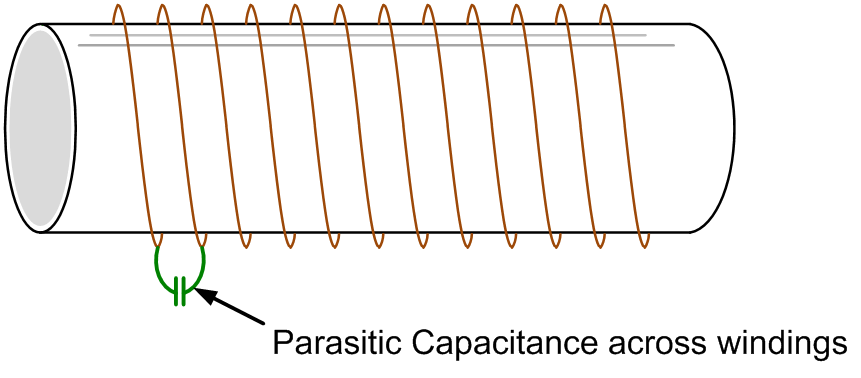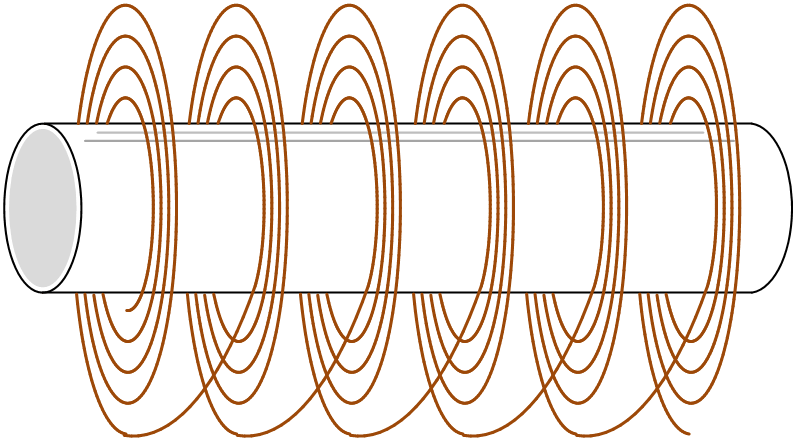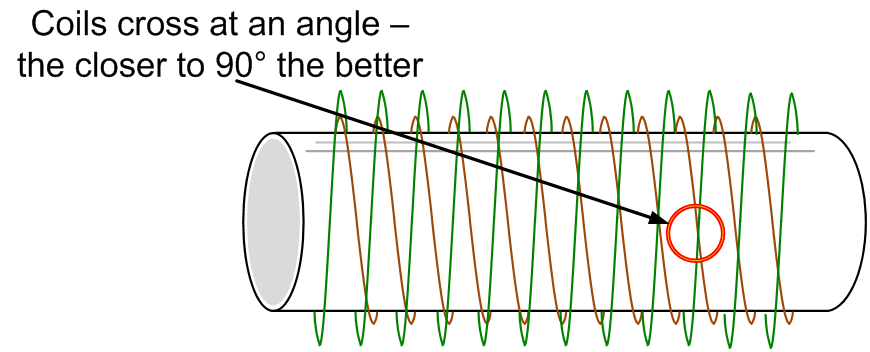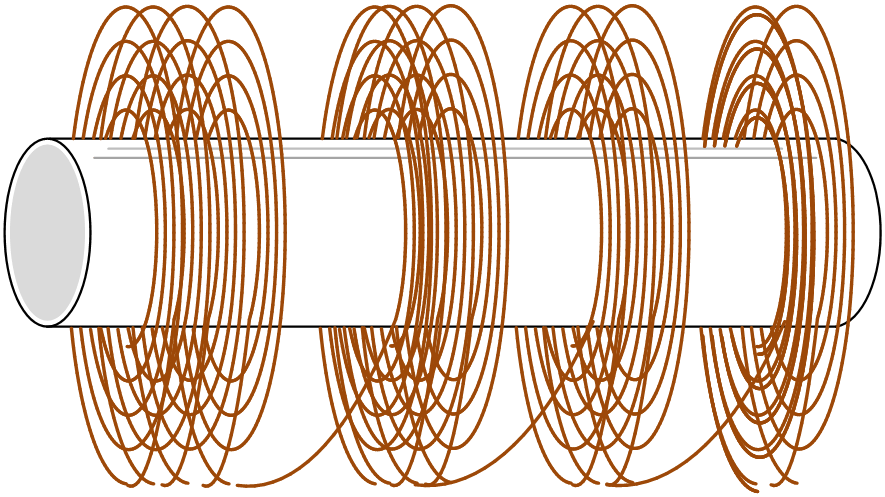SNOA930C March 2015 – May 2021 LDC0851 , LDC1001 , LDC1001-Q1 , LDC1041 , LDC1051 , LDC1101 , LDC1312 , LDC1312-Q1 , LDC1314 , LDC1314-Q1 , LDC1612 , LDC1612-Q1 , LDC1614 , LDC1614-Q1 , LDC2112 , LDC2114 , LDC3114 , LDC3114-Q1
2.5.2 Techniques to Improve SRF for Wire-wound Inductors
Wire-wound inductors can typically have a very large numbers of turns (or windings) and, as a result, while they can have very high inductances and relatively high RP values, they often have a low SRF.
 Figure 2-17 Wire-Wound Inductor Parasitic Capacitance
Figure 2-17 Wire-Wound Inductor Parasitic CapacitanceThe SRF is a highly dependent on the geometry of the windings. With wire-wound inductors composed of large numbers of turns, there are specific winding patterns that can reduce the parasitic capacitance and therefore increase the SRF. One of the first methods is to wind the coil out, then wind across, as shown in Figure 2-18. This method reduces area between turns with a large voltage differential.
 Figure 2-18 Winding-Out Method
Figure 2-18 Winding-Out MethodA second winding method, shown in Figure 2-19, is to configure windings so that they cross at an angle, which reduces the cross-sectional area between windings. Crossing angles must be as close to 90° as possible. A coil designed in this manner is often called a Honeycomb coil.
 Figure 2-19 Winding Crossing for Honeycomb Coil
Figure 2-19 Winding Crossing for Honeycomb CoilIt is an acceptable to combine the techniques to produce groups of windings, as shown in Figure 2-20.
 Figure 2-20 Combination of Both Winding-out and Crossing
Figure 2-20 Combination of Both Winding-out and Crossing